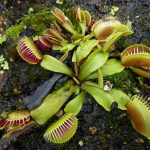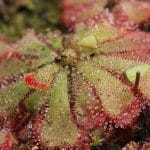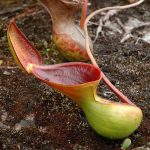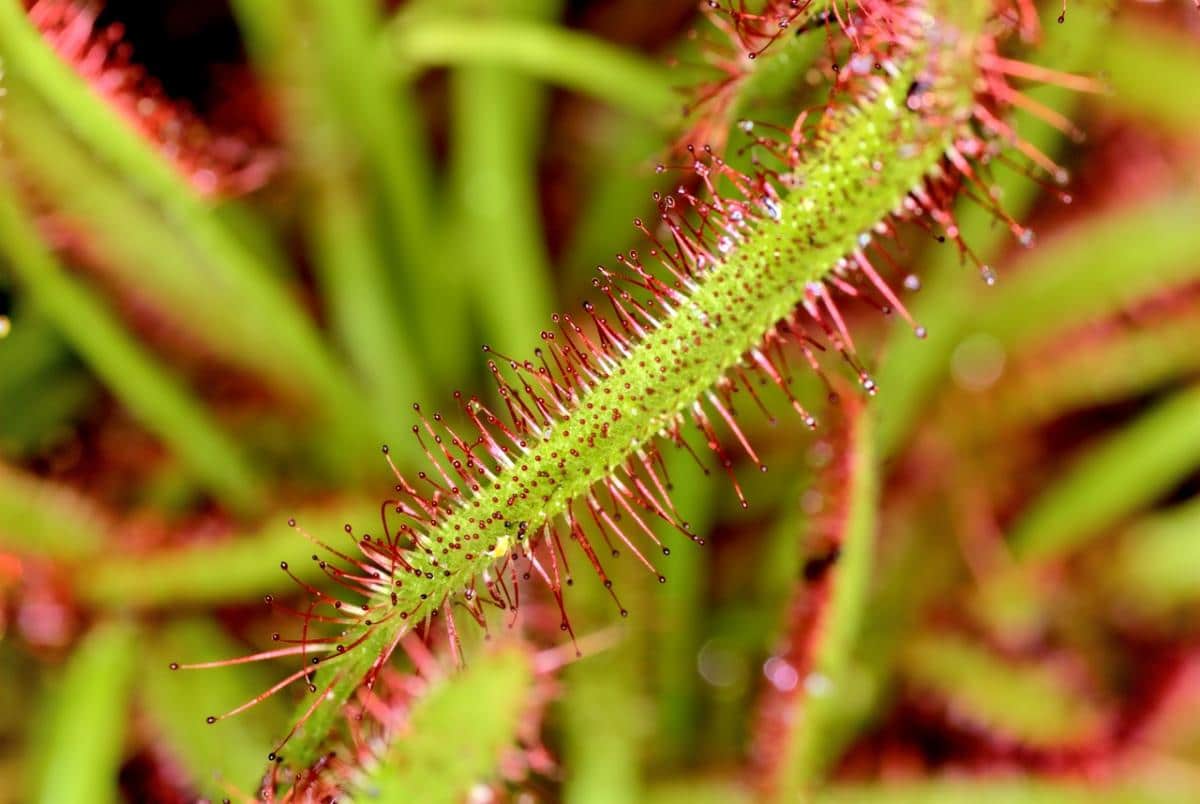
Carnivorous plants have become very popular thanks to their peculiar lifestyle, as their leaves have been transformed into perfect insect traps. Without a doubt, the most famous of all is the Venus flytrap, one that closes its mouth in a very few seconds when a fly enters it and touches or brushes one of its hairs, which activate the trap's closing mechanism.
Because it does so on a timescale visible to our eyes, it draws our attention powerfully. It is unavoidable. But let me tell you something: there are many other species that are interesting too. So I'm going to explain everything about carnivorous plants: the types and their care so that you can grow them as well as possible.
Caring for carnivorous plants
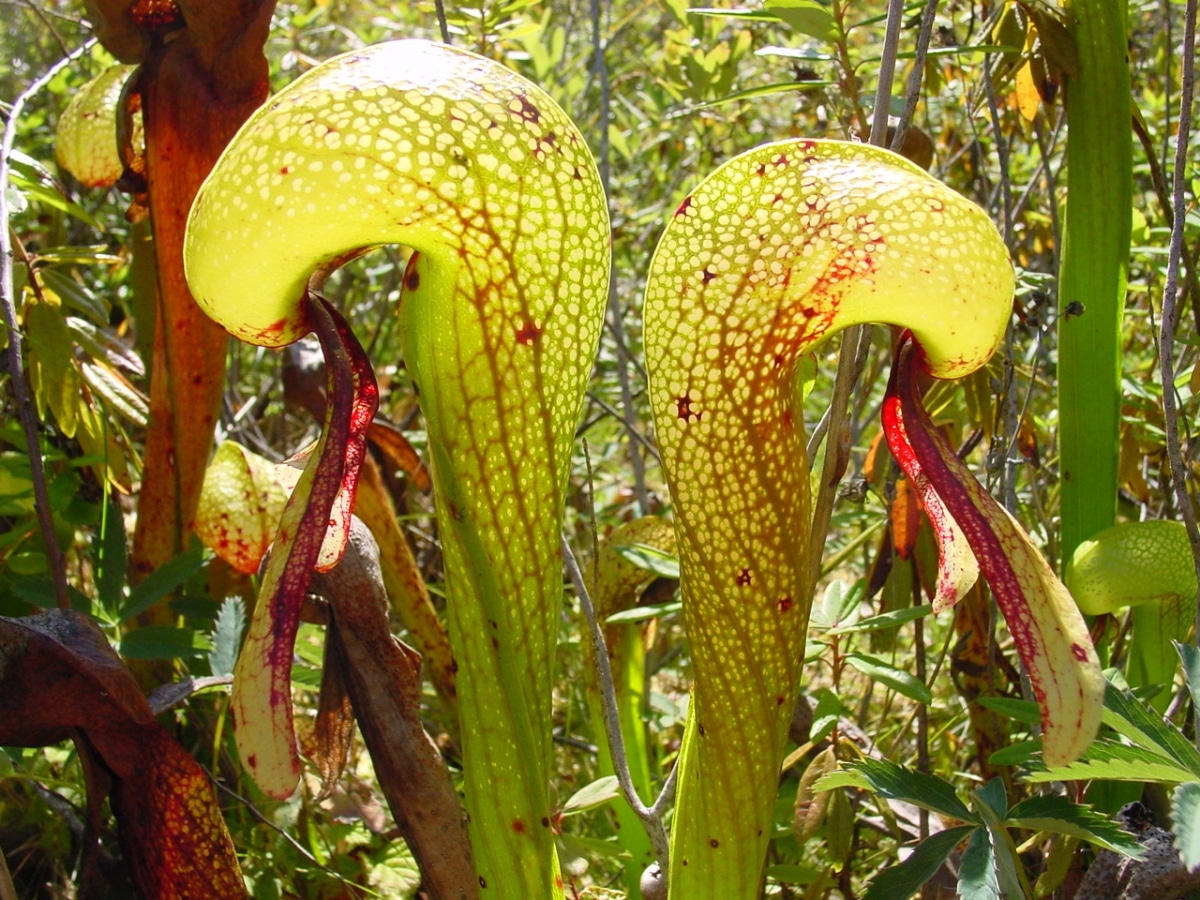
Image - Wikimedia / NoahElhardt // darlingtonia californica
Carnivorous plants require a series of special care to be healthy when grown. Unlike the rest, they they are demanding with the soil, the pot and also with the irrigation waterThey live in habitats where the soil is poor in nutrients, in part because the water carries them with it. For this reason, it is very important that this is kept in mind so that our plant accompanies us the more years the better.
Where are carnivorous plants put?
We started at the beginning, how could it be otherwise. The carnivores have just arrived home, either because we have gone to buy them at a nursery or because we placed an online order at a store, and the first question that arises is: where do I put them? Are they indoor or outdoor?
Well, all the plants are outdoors, but there are some that due to their low or no resistance to cold have to be grown at home during the winter. In the case of our protagonists, the most delicate are those that come from tropical and subtropical regions, such as most sundews, Nepenthes or Heliamphora.
By contrast, those that best resist cold are Sarracenia, Drosophyllum and Dionaea muscipula. In fact, these three if you live in an area with a Mediterranean climate you can have them outside throughout the year. They hold up well to weak frosts down to -2ºC.
In the sun or in the shade?
In general, they have to be put in the shade, but this will depend on what type of carnivorous plant it is and where it is going to be grown.. For example, if it is going to be indoors, it must be placed in a room where there is a lot of light, regardless of the variety of plant it is; but outside the only one that has to be in full sun is Sarracenia.
There are others like the Dionaea or the Darlingtonia that can get used to direct sunlight, but only for a while and never during the central hours of the day, and less in summer.
What type of pot and substrate do they need?
The pot must be made of plastic and with holes in its base. Plastic is a smooth material that also takes time to decompose. It is cheap and light, and what is more important for carnivores: no nutrients are released over time, which is what happens with the clay pot.
Regarding the substrate, the standard mixture is as follows: 70% unfertilized blond peat mixed with 30% perlite. Now, depending on the gender, one mix or another is recommended:
- Cephalotus: 60% blond peat (for sale here) + 40% perlite (for sale here).
- Darlingtonia: live sphagnum moss.
- Dionaea: standard mix.
- Drosera: ditto.
- Drosophyllum: 40% white peat + 40% quartz sand + 10% chopped pine bark (on sale here) + 10% perlite.
- Nepenthes: live sphagnum moss or standard mix.
- Pinguicula: standard mix.
- Sarracenia: ditto.
- Utricularia: ditto.
How is the watering of carnivorous plants?
These are plants that must be watered with distilled water, with clean rain, or with water whose dry residue is less than 200ppm (such as Bezoya or Bronchales). The air conditioning will also work. Once we have it, We will proceed to water the carnivores several times a week during the summer, ensuring that the substrate always remains somewhat humid.. On the contrary, the rest of the year the irrigation will be more spaced.
Now, Is there an exact number of times to water them? Do not. This depends a lot on what type of plant it is, the climate and whether we have it indoors or outdoors. For example, I have Sarracenia out all year round with a plate underneath, and since in summer I do not fill that plate every 2 or 3 days I will immediately see that they begin to dry out. But indoors I have a Heliamphora, also with a plate, and I water it once or twice a week at most in that same season; In winter it is watered much less as the land remains wet for a longer time.
Of course, in any case, I recommend watering like this, from below; that is, filling the plate. In this way, the substrate will be able to absorb water better.
Do they need high humidity?
Most carnivorous plants live in swampy lands, places where the humidity is high. Thus, in places where the humidity is low it is important that containers with water are placed around from the pots.
Are they to be transplanted? When?
Yes, of course. But not all. Sundew or Cephalotus for example are small plants, which will only have to be transplanted a couple of times or three in their entire life. Large ones, like Sarracenia or Nepenthes, will need a change every 2 or 3 springs.
You have to be a little pending, and see how they grow to transplant them as soon as the pot is too small for them.
What can you feed a carnivorous plant?
If she is abroad, she does not need to be given anything, as she alone will take care of her feeding. But if we have it at home, we can give it an insect once a week. Of course, it is very important that insecticide has not been added, since otherwise the carnivore could die poisoned.
In addition, you have to keep in mind that it does not have to be fertilized, since its roots cannot absorb the nutrients directly.
Types of carnivorous plants that are easy to care for
Now we are going to see which are the carnivores whose care is relatively simple, always taking into account what we have talked about so far:
- Dionaea muscipula
- Image - Wikimedia / Björn S… // Drosera aliciae
- Dionaea muscipula: is the venus flytrap. It is a plant that does not exceed 5 centimeters in height, with mouth-shaped traps which close quickly if an insect enters them. It needs a lot of light and humidity, but it is afraid of waterlogging. Resists up to -2ºC.
- Subtropical sundewsSundew are carnivorous, called sundew, because each of their trap-leaves has "hairs" at the end of which are mucilage, which is a transparent sticky substance. They do not exceed 10 centimeters in height, and they tend to produce many suckers. The easiest are: Sundew aliciae, Sundew spatulata y Sundew capensis. Put them in the shade, or in a room with light if they are going to be at home, and give them regular watering.
- Image - Wikimedia / JeremiahsCPs // Nepenthes lowii
- Sarracenia hybrid
- Highland nepenthes: The nepenthes they are known as pitcher plants since they have traps that take that shape. Some are climbers, and there are others that grow on the ground. They present leaves that at first seem common, but the nerve continues to grow until it swells, thus forming the trap. Those sold in nurseries are usually from lowlands and therefore very sensitive to cold, but if you are looking for one that is really easy to care for, I recommend those from highlands, such as Nepenthes lowii or the nepenthes villosa. In any case, they must be indoors as they do not resist frost.
- Sarracenia: they are a genus of carnivorous plants that can reach up to one meter in height. They have tube-shaped traps of different colors (green, reddish or pink, multicolored…), and all they need is direct sun and lots and lots of water. In addition, they support frosts down to -2ºC. For me, Saracenia They are the easiest carnivorous plants to care for, the best to start in this world.
And you, do you dare to grow carnivorous plants?
